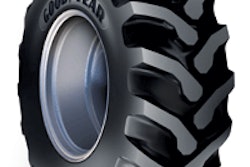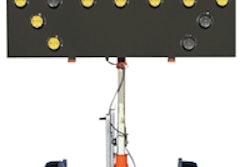United Rentals Inc. announced financial results on April 19 for the first quarter 2011. Total revenue was $523 million and rental revenue was $434 million, compared with $478 million and $380 million, respectively, for the same period last year.
On a GAAP basis, the company reported a first quarter 2011 net loss of $20 million, or $0.34 per diluted share, compared with a net loss of $40 million, or $0.67 per diluted share, for the same period in 2010. Adjusted EPS for the quarter, which excludes the impact of special items, was a loss of $0.32 per diluted share, compared with a loss of $0.57 per diluted share the prior year. The effective tax rate for the quarter was 25.9 percent
First Quarter 2011 Highlights
- Rental revenue increased 14.2 percent, reflecting year-over-year increases of 4.2 percent in rental rates and 12.8 percent in the volume of equipment on rent. The company has reaffirmed its outlook for an increase in rental rates of at least 5 percent for the full year.
- Time utilization was 62.4 percent, an increase of 6.2 percentage points from the same period last year, and a first quarter record for the company. The company has reaffirmed its outlook for an increase in time utilization for the full year of about 1 percentage point.
- The company generated $32 million of proceeds from used equipment sales at a gross margin of 43.8 percent, compared with $35 million of proceeds at a gross margin of 31.4 percent for the same period last year.
- Adjusted EBITDA was $145 million, an increase of $30 million compared with the same period last year. Adjusted EBITDA margin was 27.7%, an increase of 3.6 percentage points compared with the same period last year.
CEO Comments
In a written statement announcing the first-quarter results, United Rentals CEO Michael Kneeland, noted the following: “We have started the year with a very solid performance that includes rate improvement in all operating regions and record first quarter time utilization, as well as stronger gross margins on every major revenue stream. Once again we outpaced our end markets with significant rental revenue growth at a very early stage in the recovery. As demand for our services increases, we are focused on attaining the optimal balance of rate and utilization to drive returns.”
Free Cash Flow and Fleet Size
For the first quarter 2011, free cash flow was $70 million, after total rental and non-rental capital expenditures of $120 million. By comparison, free cash flow for the first quarter 2010 was $99 million after total rental and non-rental capital expenditures of $54 million. Free cash flow for the first quarter 2010 included the receipt of a $55 million federal tax refund. The company has reaffirmed its outlook for full year 2011 free cash flow generation in the range of $10 million to $50 million.
The size of the rental fleet was $3.85 billion of original equipment cost at March 31, 2011, compared with $3.79 billion at December 31, 2010. The age of the rental fleet was 48.2 months on a unit-weighted basis at March 31, 2011, compared with 47.7 months at December 31, 2010.
Return on Invested Capital (ROIC)
Return on invested capital was 4.3 percent for the 12 months ended March 31, 2011, an increase of 2.3 percentage points from the same period last year. The company’s ROIC metric uses after-tax operating income for the trailing 12 months divided by the averages of stockholders’ equity (deficit), debt and deferred taxes, net of average cash. To mitigate the volatility related to fluctuations in the company’s tax rate from period to period, the federal statutory tax rate of 35 percent is used to calculate after-tax operating income.
Non-GAAP Measures
Free cash flow, earnings before interest, taxes, depreciation and amortization (EBITDA), adjusted EBITDA, and adjusted earnings per share (adjusted EPS) are non-GAAP financial measures as defined under the rules of the SEC. Free cash flow represents net cash provided by operating activities, less purchases of rental and non-rental equipment plus proceeds from sales of rental and non-rental equipment and excess tax benefits from share-based payment arrangements, net. EBITDA represents the sum of net loss, benefit for income taxes, interest expense, net, interest expense-subordinated convertible debentures, depreciation of rental equipment and non-rental depreciation and amortization. Adjusted EBITDA represents EBITDA plus the sum of the restructuring charge and stock compensation expense, net. Adjusted EPS represents EPS plus the sum of the restructuring charge and the losses on the repurchase/retirement of debt securities and subordinated convertible debentures. The company believes that: (i) free cash flow provides useful additional information concerning cash flow available to meet future debt service obligations and working capital requirements; (ii) EBITDA and adjusted EBITDA provide useful information about operating performance and period-over-period growth; and (iii) adjusted EPS provides useful information concerning future profitability. However, none of these measures should be considered as alternatives to net income, cash flows from operating activities or earnings per share under GAAP as indicators of operating performance or liquidity. Information reconciling forward-looking free cash flow to a GAAP financial measure is unavailable to the company without unreasonable effort.












